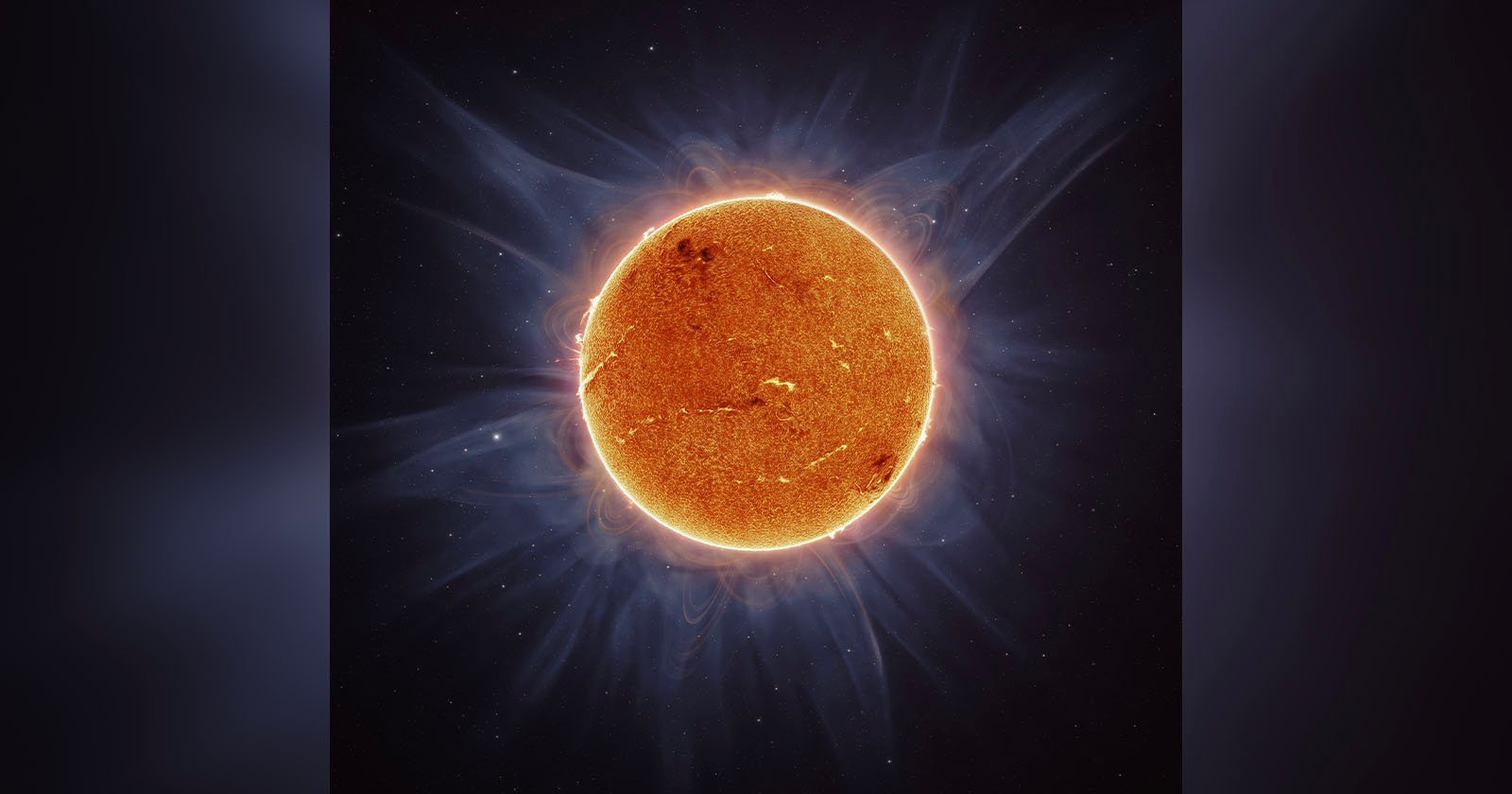
Astrophotographer Andrew McCarthy says his latest 375-megapixel image of the Sun could be controversial as it blends science and art with two images taken weeks apart. However, the overall effect — combining the solar chromosphere and the corona — results in a “more complete story of what is happening with our star.” It also has the most dynamic range McCarthy has ever achieved on a solar image. Titled Storms of our Star, McCarthy tells PetaPixel that he had always envisioned such a picture but it required a solar eclipse to pull it off because that’s when the corona is visible. “My shots from the 2017 eclipse weren’t good enough, unfortunately,” he says. “After the [2024] eclipse, I spent a lot of time shooting the Sun using a hydrogen-alpha-modified telescope, waiting until chromosphere features would fit a look I felt was appropriate for this composition. This meant shooting the Sun for hours each day every day I was home.” On May 27, an X-class solar flare erupted from the solar limb. This gave McCarthy an opportunity to capture a unique feature: coronal loops filled with material pulled from the solar chromosphere that follow the magnetic fields of the Sun.
“These are generally only visible following massive flares that happen right on the limb, allowing these loops to form a silhouette against the background space,” he adds. You can see how the plasma traces these magnetic field lines in this timelapse. After shooting the sun every day for weeks, I chose the photos captured this day to be part of my upcoming high-resolution photo project I will be releasing Wednesday to email subscribers. pic.twitter.com/S2E4f0KfOX — Andrew McCarthy (@AJamesMcCarthy) July 17, 2024 The solar disc in the image is a mosaic made from over a terabyte of photo data shot across a three-hour period. To integrate the corona, McCarthy had to re-process the HDR photo he shot back in April to better integrate the corona and chromosphere. “The corona itself was much lower fidelity than the chromosphere, so there was a harsh transition between the two layers,” he explains. “This is where the digital art comes in. The Sun has a complex magnetic field, that is only visible in certain contexts. Mainly, when plasma is caught in the loops.” “During an eclipse, much of it is visible, but the area near the solar limb is generally too washed out to resolve,” he continues.
“For that reason, I studied the features and rendered the loops you see in the photo, allowing me to tie the coronal features with the chromosphere features using real scientific data.” McCarthy acknowledges that the picture “bends some of the rules for astrophotography” but the unique image shows a more complete picture of Earth’s star. To buy a print of Storms of our Star, head to McCarthy’s website. More of McCarthy’s work can be found on his Instagram, X, Facebook, and website. Image credits: All photos by Andrew McCarthy.






